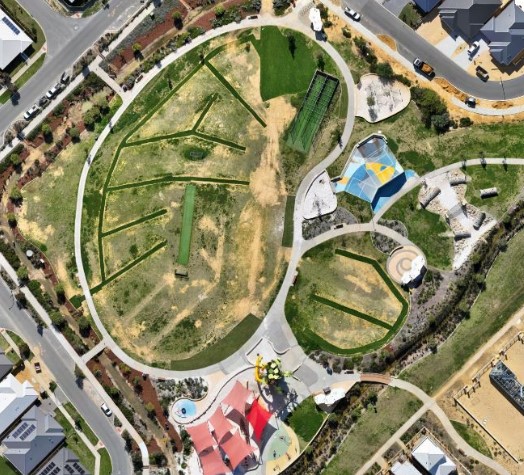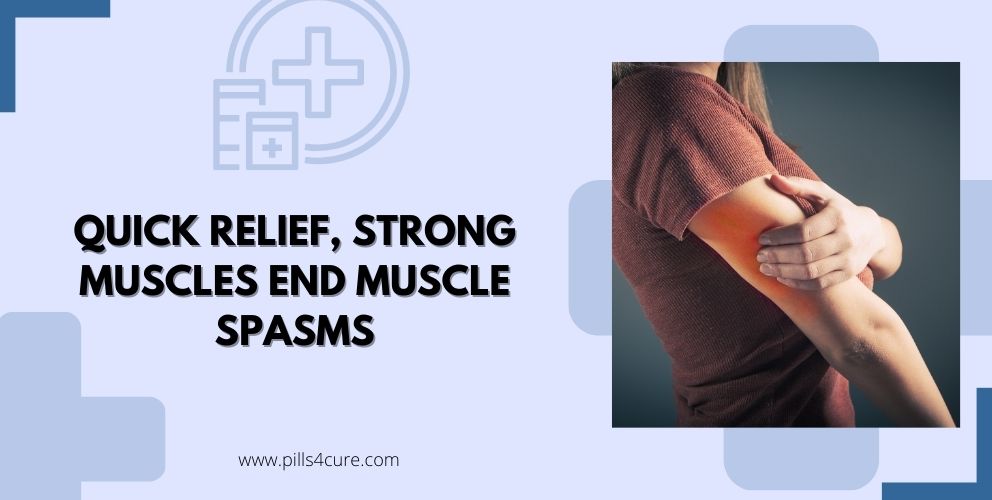Sudden muscle spasms can occur without warning, leading to sharp pain and even short-term immobility that interferes with daily life. While many people link muscle cramps to overexertion or injury, one of the most underestimated yet vital factors in preventing these painful episodes is staying properly hydrated. Understanding how fluid balance influences muscle performance is crucial for maintaining strength, flexibility, and overall muscle health. In cases where hydration and lifestyle changes are not enough, medications such as baclofen for muscle pain may be recommended to help relax involuntary contractions and provide relief from recurring spasms.
What Are Muscle Spasms? Understanding the Fundamentals
Muscle spasms are sudden, involuntary contractions of one or more muscles that can cause significant pain and temporary loss of function. These contractions occur when muscle fibers tighten uncontrollably, creating a hard, visible knot beneath the skin that can last anywhere from seconds to several minutes.
The physiological process behind muscle contractions relies heavily on proper electrolyte balance and adequate hydration. When your body lacks sufficient fluids, the delicate balance of sodium, potassium, calcium, and magnesium becomes disrupted, leading to abnormal muscle fiber activity. This disruption can trigger the sudden onset of painful contractions that characterize muscle spasms.
Understanding what causes these involuntary contractions helps in developing effective prevention strategies. While various factors contribute to muscle spasms, dehydration consistently ranks among the top preventable causes, making hydration awareness crucial for long-term muscle health.
Recognizing Signs of a Muscle Spasm
Identifying the early signs of a muscle spasm can help you take immediate action to minimize pain and duration. The most common muscle spasm symptoms include:
Immediate Physical Indicators:
- Sharp, sudden pain in the affected muscle
- Visible muscle tightening or hardening
- Localized tenderness and sensitivity to touch
- Temporary loss of normal muscle function
- Involuntary muscle twitching or fasciculations
Progressive Warning Signs:
- Muscle fatigue or weakness preceding the spasm
- Subtle cramping sensations before full spasm onset
- Increased muscle tension during physical activity
- Reduced flexibility or range of motion
- Persistent muscle soreness in specific areas
Hydration-Related Symptoms:
- Concurrent thirst or dry mouth
- Decreased urine output or dark-colored urine
- General fatigue or weakness
- Headache accompanying muscle symptoms
- Dizziness or lightheadedness
Recognizing these signs early allows for prompt intervention, including immediate rehydration and gentle muscle stretching to prevent full spasm development.
Understanding the Reason for Muscle Spasms
The reason for muscle spasms involves multiple interconnected factors, with dehydration playing a central role in disrupting normal muscle function. When your body becomes dehydrated, several physiological changes occur that increase spasm susceptibility:
Electrolyte Imbalance: Dehydration disrupts the crucial balance of electrolytes—sodium, potassium, calcium, and magnesium—that regulate muscle contractions. These minerals work together to facilitate proper nerve signal transmission and muscle fiber relaxation. When fluid levels drop, electrolyte concentrations become altered, leading to abnormal muscle activity.
Reduced Blood Flow: Adequate hydration maintains optimal blood volume, ensuring efficient oxygen and nutrient delivery to muscle tissues. Dehydration reduces blood volume, compromising circulation to working muscles and increasing the likelihood of cramping and spasms.
Metabolic Waste Accumulation: Proper hydration helps flush metabolic waste products from muscle tissues. When dehydrated, these waste products accumulate, creating an environment conducive to muscle irritability and spasm formation.
Nerve Function Disruption: Dehydration affects nerve signal transmission, leading to miscommunication between the nervous system and muscle fibers. This disruption can trigger involuntary contractions and sustained muscle spasms.
The Primary Cause of Spasm: Dehydration’s Hidden Impact
While multiple factors contribute to muscle spasms, dehydration represents one of the most significant and preventable causes. The cause of spasm related to inadequate fluid intake involves several interconnected mechanisms:
Cellular Dehydration: Individual muscle cells require adequate fluid to maintain their shape and function. When dehydrated, cells shrink and become more excitable, increasing the likelihood of spontaneous contractions. This cellular-level dehydration directly impacts muscle fiber stability and normal relaxation cycles.
Ion Channel Dysfunction: Proper hydration maintains the function of ion channels responsible for controlling muscle contractions. Dehydration alters the concentration gradients necessary for these channels to operate normally, leading to erratic muscle activity and increased spasm risk.
Temperature Regulation Impairment: Adequate hydration supports the body’s temperature regulation system. When dehydrated, muscles generate excess heat during activity, creating conditions that promote cramping and spasms. This is particularly relevant during exercise or in hot environments.
Inflammatory Response Activation: Chronic dehydration can trigger low-grade inflammation in muscle tissues, making them more susceptible to spasms. This inflammatory state alters normal muscle recovery processes and increases overall muscle irritability.
Hydration Strategies for Muscle Spasm Prevention
Developing effective hydration strategies requires understanding both daily fluid needs and specific circumstances that increase hydration requirements:
Daily Hydration Guidelines:
- Consume at least 8-10 glasses of water daily for baseline hydration
- Increase intake during physical activity, hot weather, or illness
- Monitor urine color as a hydration indicator—pale yellow indicates adequate hydration
- Distribute fluid intake throughout the day rather than consuming large amounts at once
Exercise-Specific Hydration:
- Pre-exercise: Consume 16-20 ounces of fluid 2-3 hours before activity
- During exercise: Drink 6-12 ounces every 15-20 minutes during prolonged activity
- Post-exercise: Replace 150% of fluid lost through sweat
- Include electrolyte-rich beverages for activities lasting longer than one hour
Optimal Fluid Choices:
- Plain water for general hydration needs
- Electrolyte solutions for intense or prolonged physical activity
- Natural options like coconut water for moderate electrolyte replacement
- Avoid excessive caffeine or alcohol, which can promote dehydration
Muscle Spasm Symptoms: When to Seek Medical Attention
While most muscle spasms resolve with proper hydration and basic care, certain symptoms warrant immediate medical evaluation:
Emergency Warning Signs:
- Severe spasms lasting longer than 10 minutes
- Spasms accompanied by fever, severe weakness, or breathing difficulties
- Frequent spasms occurring multiple times daily
- Spasms associated with significant swelling or skin color changes
- Muscle spasms following potential injury or trauma
Chronic Symptom Patterns:
- Recurring spasms despite adequate hydration efforts
- Progressive muscle weakness between spasm episodes
- Spasms affecting multiple muscle groups simultaneously
- Associated numbness or tingling in affected areas
- Spasms interfering with sleep or daily activities
These symptoms may indicate underlying medical conditions requiring professional evaluation and targeted treatment beyond simple hydration measures.
Muscle Spasms Medication: Treatment Options and Considerations
When hydration and conservative measures prove insufficient, various muscle spasms medication options are available:
Over-the-Counter Options:
- NSAIDs (ibuprofen, naproxen) for anti-inflammatory effects
- Topical analgesics for localized pain relief
- Magnesium supplements for electrolyte support
- Combination pain relievers with muscle relaxant properties
Prescription Medications: Healthcare providers may prescribe specific medications for persistent or severe muscle spasms:
Baclofen for Muscle Pain: Baclofen represents one of the most commonly prescribed muscle relaxants for managing chronic muscle spasms. This medication works by acting on the central nervous system to reduce muscle hyperactivity and spasticity. Baclofen for muscle pain is particularly effective for individuals with neurological conditions or chronic muscle tension disorders.
Key Benefits of Baclofen:
- Reduces muscle spasticity and involuntary contractions
- Helps break the cycle of chronic muscle tension
- Can be adjusted to individual patient needs
- Effective for both acute and chronic muscle conditions
Important Considerations:
- Requires gradual dose adjustment under medical supervision
- May cause drowsiness or dizziness in some patients
- Should not be discontinued abruptly
- Regular monitoring by healthcare providers is essential
Other Prescription Options:
- Cyclobenzaprine for short-term muscle spasm relief
- Tizanidine for muscle spasticity management
- Diazepam for severe acute muscle spasms
- Carisoprodol for musculoskeletal conditions
Precautions and Safety Guidelines
Hydration Precautions:
- Avoid overhydration, which can lead to dangerous electrolyte dilution
- Monitor fluid intake if you have kidney disease or heart conditions
- Be cautious with sports drinks high in sodium if you have hypertension
- Consult healthcare providers before making significant hydration changes if you take diuretics
Medication Safety:
- Never exceed recommended dosages of any muscle spasm medication
- Inform healthcare providers about all medications and supplements you take
- Be aware of potential drug interactions, especially with sedatives or alcohol
- Follow prescribed treatment plans exactly as directed
Physical Activity Guidelines:
- Gradually increase exercise intensity to allow proper hydration adaptation
- Take frequent breaks during physical activity in hot environments
- Recognize early signs of dehydration and respond promptly
- Stop activity immediately if severe muscle spasms occur
Medical Consultation Requirements:
- Consult healthcare providers before starting new medications
- Seek immediate care for severe or persistent muscle spasms
- Discuss hydration strategies if you have chronic medical conditions
- Report any unusual symptoms or medication side effects promptly
Frequently Asked Questions (FAQs)
Q: Can drinking too much water cause muscle spasms?
A: Yes, excessive water consumption can dilute electrolytes, particularly sodium, leading to a condition called hyponatremia. This electrolyte imbalance can actually trigger muscle spasms. Balance water intake with appropriate electrolyte consumption, especially during prolonged physical activity.
Q: How quickly can proper hydration help resolve muscle spasms?
A: Mild dehydration-related spasms may begin improving within 15-30 minutes of adequate fluid intake. However, full resolution may take several hours as your body restores proper electrolyte balance. Severe or chronic spasms may require longer rehydration periods and medical intervention.
Q: Are there specific foods that help prevent muscle spasms?
A: Yes, foods rich in key electrolytes can support muscle function: bananas (potassium), leafy greens (magnesium), dairy products (calcium), and nuts and seeds (magnesium). Maintaining a balanced diet alongside proper hydration provides comprehensive muscle spasm prevention.
Q: When should I consider prescription medication like baclofen for muscle spasms?
A: Consider prescription options when muscle spasms are frequent, severe, or don’t respond to conservative measures including proper hydration, stretching, and over-the-counter treatments. Baclofen is particularly helpful for chronic conditions or spasms related to neurological disorders.
Q: Can certain medical conditions make me more prone to dehydration-related muscle spasms?
A: Yes, conditions like diabetes, kidney disease, heart failure, and certain medications (diuretics) can increase dehydration risk. If you have chronic medical conditions, work with your healthcare provider to develop an appropriate hydration strategy.
Q: Is it normal to experience muscle spasms after starting a new exercise routine?
A: Mild muscle cramping can occur when beginning new activities, often due to increased fluid and electrolyte needs. Ensure adequate hydration before, during, and after exercise. If spasms are severe or persistent, consult a healthcare provider to rule out other causes.
Q: How can I tell if my muscle spasms are due to dehydration or another cause?
A: Dehydration-related spasms often occur with other signs like thirst, dark urine, fatigue, or during/after physical activity. If spasms persist despite adequate hydration, occur frequently without apparent triggers, or are accompanied by neurological symptoms, seek medical evaluation.
Q: Are there any natural alternatives to prescription muscle relaxants?
A: Several natural approaches may help: magnesium supplements, tart cherry juice (anti-inflammatory), turmeric (anti-inflammatory), proper hydration with electrolytes, gentle stretching, massage therapy, and heat/cold therapy. However, severe or chronic conditions may still require prescription treatment.







